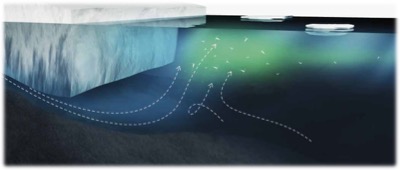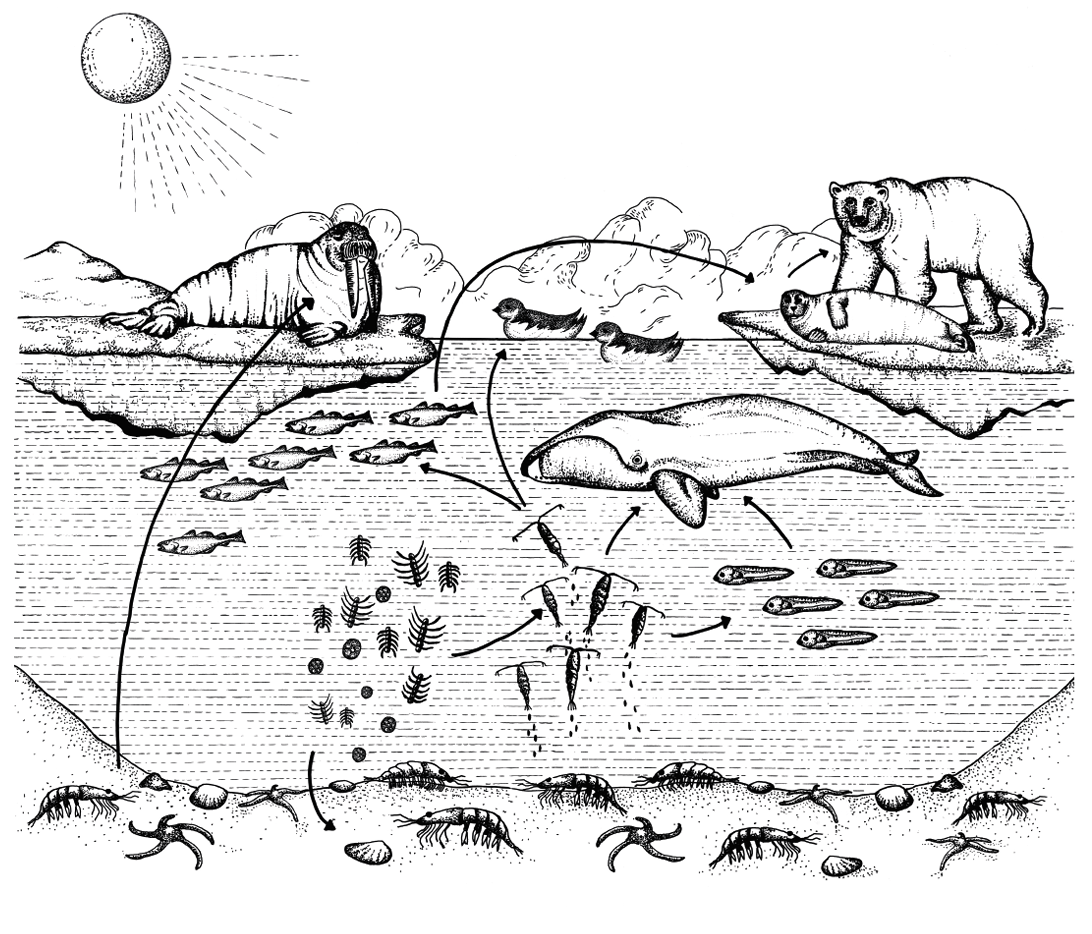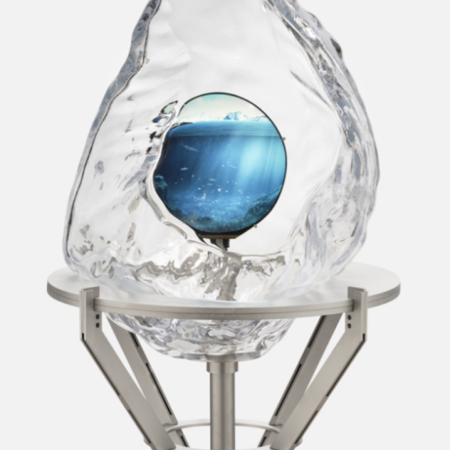THE SPRING BLOOM
- The nutritious Icefjord
- The importance of the sea ice for the spring bloom
- The spring bloom
You solve the tasks by using
- Text
- Audio
- Drawing tools
- Pictures
This part is based on pp. 8-15 – there you will find information about the subject.
Read about climate changes in Greenland.
In the Icefjord conditions are good for an abundance of food. Especially in spring and summer when sunlight creates a rich production of phytoplankton

dead organic material up to make nice meals for smaller organisms.
The copepods having spent the winter at the bottom of the sea rise up and eat themselves fat in the nutritious plankton.
- Explain the carbon cycle in the sea.
- What would happen to the oxygen level at the bottom of the sea if the meltwater from the glacier did not mix with salt water from the fjord?
Why does the production of phytoplankton increase in spring and summer?
This is a marine food web. A food web is a model showing the mutual feeding relations between animals in a certain ecosystem.

A food web always contains an organism that can transform the energy from the sun to useful nourishment – a photoautotrophic organism.
Why is it important that the copepods eat themselves fat?
What does the concept photoautotrophic mean, and which organism is that in this food web?
Who are herbivores and who are carnivores in this food web?
If the ice breaks earlier than usual or there is no ice at all, the bloom of phytoplankton wil occur too early.

This means that the copepods will rise too late and not get enough food during the bloom. This may have disastrous consequences for the entire food web.
What could be the causes of the ice breaking too early or being completely missing?
Explain the disastrous consequences for the marine food web, based on the energy transfer in the ecosystem.
When the copepods rise towards the surface, will they be close to or far from the glacier front?
In the Icefjord conditions are good for an abundance of food. Especially in spring and summer when sunlight creates a rich production of phytoplankton

dead organic material up to make nice meals for smaller organisms.
The copepods having spent the winter at the bottom of the sea rise up and eat themselves fat in the nutritious plankton.
- Explain the carbon cycle in the sea.
- What would happen to the oxygen level at the bottom of the sea if the meltwater from the glacier did not mix with salt water from the fjord?
Why does the production of phytoplankton increase in spring and summer?
This is a marine food web. A food web is a model showing the mutual feeding relations between animals in a certain ecosystem.

A food web always contains an organism that can transform the energy from the sun to useful nourishment – a photoautotrophic organism.
Why is it important that the copepods eat themselves fat?
What does the concept photoautotrophic mean, and which organism is that in this food web?
Who are herbivores and who are carnivores in this food web?
If the ice breaks earlier than usual or there is no ice at all, the bloom of phytoplankton wil occur too early.

This means that the copepods will rise too late and not get enough food during the bloom. This may have disastrous consequences for the entire food web.
What could be the causes of the ice breaking too early or being completely missing?
Explain the disastrous consequences for the marine food web, based on the energy transfer in the ecosystem.
When the copepods rise towards the surface, will they be close to or far from the glacier front?




